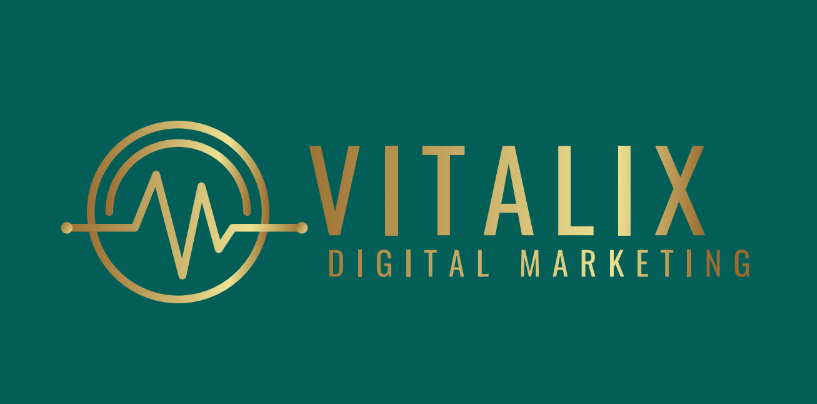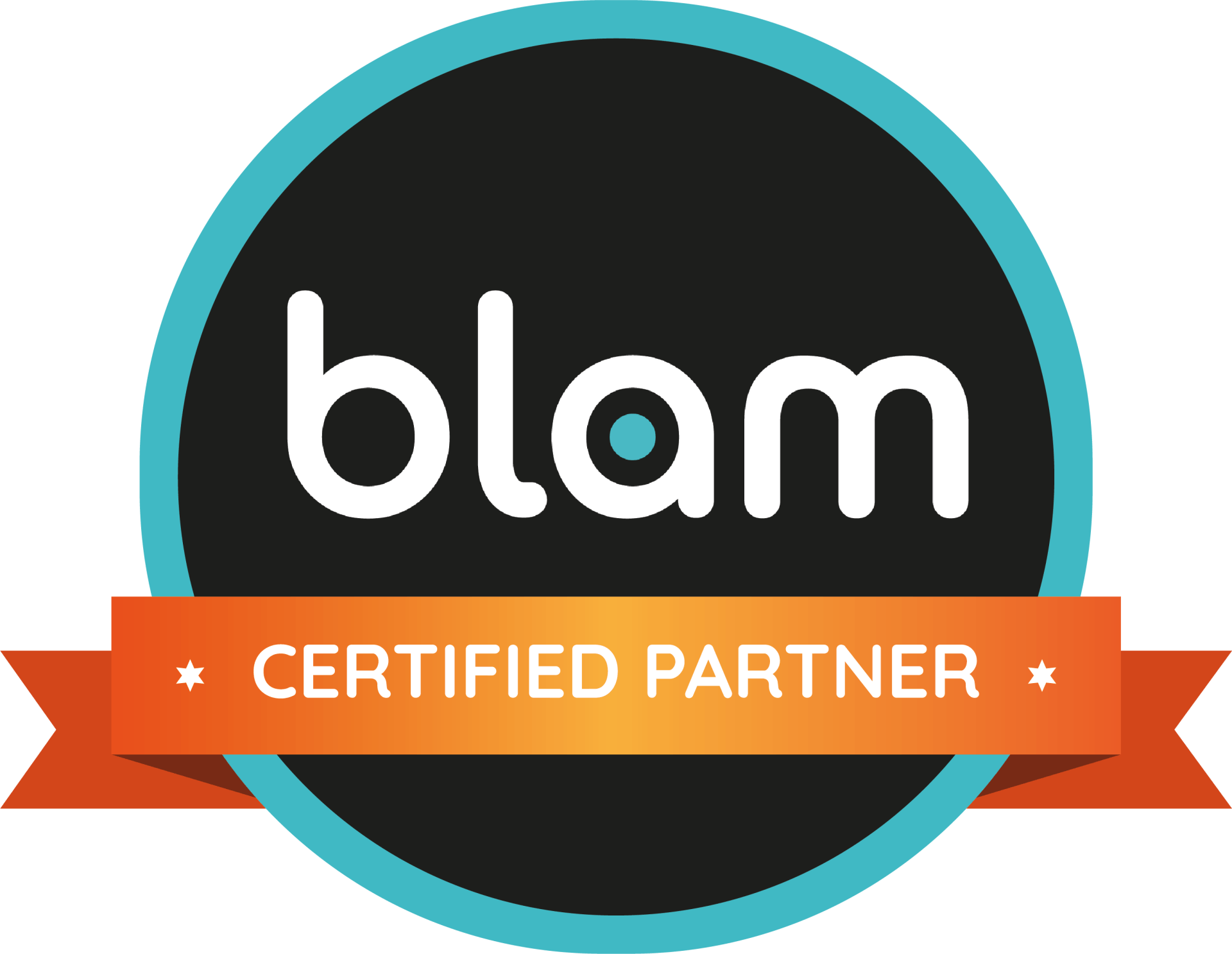How to Get More Traffic for Your New Website
SEO, Content, and Marketing Tips

Just like bees are drawn to a vibrant flower, your website needs to attract visitors with the right mix of SEO, content, and marketing strategies.
Now you have invested in the perfect website, complete with essential features like optimization for speed and keywords, clear calls-to-action, AI-driven enhancements, structured headings (H1, H2, H3), and an engaging visitor experience. This includes mobile-friendliness, accessibility options, chat and booking widgets, contact forms, and a local presence connected to Google My Business for maps, calls, and reviews. You’re linked to social channels and may even have integrated eCommerce functionality. But what’s next? A strong website is only the foundation. To truly drive traffic, you need a well-rounded strategy that brings visitors to your digital doorstep.
Many business owners believe that once they’ve launched a website, visitors will start flocking to it automatically. Yes, a website is an essential foundation—it’s your online storefront, the hub where all your marketing efforts lead, a tool for tracking visitors, and a way to appear in searches. However, having a website is just a stepping stone on the marketing path. It’s like putting a book in a library; unless people know the book exists, they won’t come looking for it. The real work comes in making sure people know about your website and want to visit.
The average website traffic for a startup in the first 1-2 years can vary widely depending on factors such as industry, target audience, marketing budget, and the effectiveness of digital marketing strategies. However, here are some general estimates and benchmarks to provide a rough idea:
Low Traffic (Under 1,000 Monthly Visits): Many startups in the early stages see fewer than 1,000 monthly visitors, especially if they rely primarily on organic SEO and word-of-mouth without significant advertising. This traffic level is typical for businesses focusing on foundational activities like building a website, refining their product, and slowly growing a brand presence.
Average Traffic (1,000 - 5,000 Monthly Visits): For startups actively working on digital marketing strategies such as content marketing, social media, and possibly some paid ads, reaching between 1,000 to 5,000 monthly visitors is a common range within the first 1-2 years. Achieving this range usually indicates that the startup is regularly producing content, engaging in SEO, and has a consistent social media presence.
High Traffic (5,000 - 20,000 Monthly Visits): Startups with a strong content strategy, regular social media engagement, active SEO optimization, and possibly a budget for paid advertising or influencer partnerships may achieve between 5,000 to 20,000 monthly visitors. This range often reflects a more mature and strategic approach to digital marketing, with regular tracking and optimization in place.
Very High Traffic (20,000+ Monthly Visits): Startups that receive more than 20,000 visitors per month within the first 1-2 years are generally exceptions and often have strong funding or unique viral appeal. They likely invest heavily in digital advertising, have a unique product that attracts media attention, or utilize aggressive influencer marketing and partnerships. For these companies, a large monthly visitor count is a sign of effective brand recognition and strong digital marketing execution.
Unlock Your Website’s Full Potential
Discover how SEO, content marketing, and paid ads can help grow your audience. Get started now with a free consultation!
Key Factors Affecting Startup Website Traffic in the Early Years:
- Industry Demand: Niche markets may see lower traffic, while broader or trend-based industries may attract more visitors.
- Digital Marketing Investment: Startups that allocate more resources to digital marketing, content creation, and paid advertising generally see faster growth in website traffic.
- Content Quality and Frequency: Regularly publishing high-quality, SEO-optimized content can significantly boost organic traffic over time.
- Competitive Landscape: If a startup competes in a highly saturated industry, it may take longer to build up substantial traffic.
- SEO Efforts: Effective SEO often takes 6 to 12 months to start showing results, but it is one of the most sustainable sources of organic traffic.
Ultimately, startups that reach at least 2,000- 5,000 monthly visitors within the first two years of launching their website are generally considered to be on a positive growth trajectory in terms of traffic. However, consistent growth and quality of the traffic (engagement, conversion rates) are often better indicators of success than raw visitor numbers alone.
To drive meaningful traffic, you’ll need a blend of strategy, effort, and sometimes financial investment. Here are five essential strategies to help you get more traffic and keep visitors coming back.
1. Search Engine Optimization (SEO)
SEO is the backbone of any successful traffic strategy. But many business owners misunderstand it, thinking that adding keywords alone will magically push their site to the top of search results. In reality, SEO is an ongoing effort to make your site visible, user-friendly, and optimized so search engines can easily understand and rank it. Imagine opening a new store in a large mall; you’d want clear signs, directions, and attractive displays to help people find you. SEO provides that visibility in the vast "mall" of the internet.
Common Misconception: SEO = Immediate Results
A common misconception is that SEO should yield instant results. However, SEO is a long-term investment. A study by Ahrefs found that only 5.7% of new pages rank in Google’s Top 10 within a year (Ahrefs, 2020). Like planting a tree, SEO takes time to grow but can provide lasting benefits once established.
Three Pillars of SEO
- On-page SEO: This involves keyword research—identifying terms your target audience is searching for—and incorporating these naturally into your site’s content, titles, and meta descriptions. Research indicates that 93% of online experiences start with a search engine, underscoring the importance of this step (Forbes, 2021).
- Off-page SEO: This pillar involves building high-quality backlinks from reputable sources. Think of backlinks as word-of-mouth referrals for your website. A 2020 study found that sites with more backlinks tend to rank higher, as they signal authority and trustworthiness (Ahrefs, 2020).
- Technical SEO: Optimizing for speed, mobile compatibility, and site security are crucial for a positive user experience. Research shows that 40% of users will leave a site that takes longer than 3 seconds to load (Google, 2017). Technical SEO helps keep visitors on your site by enhancing its usability.
Tools for Success
To gauge SEO success, use tools like Google Analytics and SEMrush. These allow you to monitor keyword rankings, traffic sources, and user engagement, which lets you fine-tune your strategy for better results over time. SEO is like building a reputation; it takes time, but the rewards are long-lasting.
Drive More Traffic with Better SEO!
Learn how to improve your rankings and attract high-quality visitors.
Check out our SEO services now!
2. Content Marketing
Content marketing is about creating valuable content that keeps people coming back, building a library of resources that answers questions and solves problems for your audience. But a common misconception is that creating a few good blog posts is enough to drive lasting traffic. It’s like having a store with one product—you need a variety of offerings to attract and retain customers.
Common Misconception: Content Marketing = One-Time Effort
Some businesses think content marketing is a one-and-done task. However, consistent, high-quality content is necessary to stay relevant. According to Demand Metric, content marketing generates three times as many leads as traditional marketing at 62% less cost (Demand Metric, 2022).
Types of Content That Drive Traffic
- Blog posts: Regular blog posts help you rank for more keywords and provide fresh, relevant content for your audience.
- Long-form content: In-depth guides, case studies, and tutorials increase time spent on the site and are highly shareable.
- Visual content: Infographics, videos, and podcasts appeal to different segments of your audience and increase shareability.
Each new piece of content is like adding another aisle in your “store,” making it more likely that visitors will find something of interest. Content marketing isn’t just about driving traffic but also about creating loyalty, as well-crafted content establishes trust and positions your brand as an authority.
3. Social Media Marketing
Social media allows you to interact with potential customers where they already spend time, but it’s not just about posting links. Imagine your website as a restaurant. Social media is the “word of mouth” that brings people in to try what you offer. It’s also a space to build relationships, share content, and engage with your audience directly.
Common Misconception: Social Media = Just Posting Links
Many believe that simply posting website links is enough. However, social media requires consistent engagement to be effective. By interacting with followers, you increase visibility and build a sense of community, which keeps your brand top-of-mind. Pew Research Center reports that 72% of internet users are active on social media, so leveraging these platforms is crucial for reaching a broad audience (Pew Research, 2021).
Maximizing Social Media Impact
- Engage with your audience: Respond to comments, ask questions, and join discussions.
- Use hashtags and tags: These tools help you reach users outside your direct audience, increasing discoverability.
- Collaborate with influencers: Influencers lend credibility and reach to your brand, introducing it to new audiences.
Social media marketing is like building friendships. It requires time, interaction, and consistency but can become one of the most valuable ways to engage and grow your audience.
4. Email Marketing
Email marketing provides a direct line to your audience, allowing for a personal approach to customer retention. Unlike social media posts that may be missed, emails go straight to the inbox, where engagement is typically higher. It’s like inviting customers into your store to see new products; it’s personal and direct, allowing for meaningful interaction.
Common Misconception: Email Marketing = Outdated
Despite some businesses considering email outdated, it remains one of the most effective digital marketing channels. For every $1 spent on email marketing, businesses see an average return of $42 (DMA, 2021). This high ROI underscores its value in a well-rounded marketing strategy.
Effective Email Strategies
- Build a quality list: Use sign-ups, lead magnets, or special offers to grow a list of genuinely interested subscribers.
- Segment and personalize: Segmenting your email list by interests or demographics allows for targeted messaging, which increases open rates by 14.31% (Mailchimp, 2020).
- Provide valuable content: Each email should offer something of value, whether it’s a promotion, a helpful tip, or exclusive insights.
Think of email marketing as a way to nurture relationships. Each email reinforces your brand, informs readers, and encourages repeat visits, turning occasional visitors into loyal customers.
5. Paid Advertising (PPC)
Paid advertising, or Pay-Per-Click (PPC), can boost traffic quickly by placing your content in front of a highly targeted audience. But unlike organic strategies, PPC requires a financial investment and careful monitoring. Imagine it as renting a billboard along a busy highway; visibility is immediate, but the impact depends on your message and the relevance to your target audience.
Common Misconception: PPC = Set-It-And-Forget-It
Some businesses believe PPC is a quick-fix traffic solution that doesn’t need ongoing management. In reality, successful PPC campaigns require frequent adjustments. Google reports that businesses earn an average of $2 in revenue for every $1 spent on Google Ads, making PPC a valuable but carefully balanced investment (Google Economic Impact Report, 2020).
Key Components of Effective PPC
- Budget management: Set a realistic budget and monitor it to avoid overspending.
- A/B testing: Test different ad creatives to find what resonates most with your audience.
- Retargeting: Re-engage users who previously visited your site to encourage conversions.
Think of PPC as a way to reach customers who may not have found you organically, complementing your long-term traffic strategies with immediate visibility.
Need Traffic Now?
Launch a targeted PPC campaign to get immediate results.
Book a free ad consultation today!
Final Thoughts
Each strategy plays a role in driving traffic, but the real power lies in using them together. SEO builds a foundation for organic growth; content marketing engages and educates; social media widens your reach; email marketing nurtures relationships, and PPC brings immediate traffic. This well-rounded approach is like a marketing “toolbox”—each tool serves a purpose, and together, they strengthen your digital presence, helping you reach your business goals.
Investing in these strategies doesn’t just drive traffic; it builds a strong, lasting presence. With time, effort, and careful planning, you can turn your website into a hub of valuable information and a destination that customers actively seek out.
FAQ’s
How long does it take to see results from SEO for a new website?
Answer: SEO is a long-term investment, and for most new websites, it can take between 6 to 12 months to see substantial results. This timeline depends on factors like industry competition, content quality, backlink profile, and ongoing optimization efforts.
What is a good monthly website traffic goal for a startup?
Answer: For startups, a good monthly traffic goal in the first 1-2 years is between 1,000 to 5,000 visits per month. Reaching this level typically requires consistent SEO, content marketing, and possibly some investment in paid ads. Over time, as SEO efforts build, traffic can steadily increase.
Which is better for traffic: SEO or PPC (pay-per-click) advertising?
Answer: SEO and PPC each have their benefits. SEO is better for long-term, sustainable traffic growth, while PPC is ideal for immediate visibility. For startups, combining both can be effective: PPC for instant traffic and SEO for long-term results.
How often should I post new content on my website?
Answer: Posting consistently is more important than posting frequently. Many experts recommend publishing at least one new post per week, as regular updates signal to search engines that your site is active, which can positively impact rankings.
Is social media really important for website traffic?
Answer: Yes, social media is crucial for building brand awareness and driving traffic. Sharing valuable content on social media platforms can expand your reach, attract new visitors to your website, and even boost SEO indirectly by generating more backlinks and engagement.
What tools can help track my website traffic?
Answer: Popular tools like Google Analytics, SEMrush, and Ahrefs provide insights into traffic sources, keyword rankings, and user behavior. These tools can help you measure performance and optimize your strategies over time.
Take the Guesswork Out of Growing Your Website Traffic!
Schedule a free consultation with our team and create a website with a tailored strategy to drive meaningful results.
Content is King—Make Your website Reign!
Let us help you create high-quality content that keeps visitors coming back.
Turn Your Website Into a Resource Hub!
Continue adding engaging content to boost your traffic and build trust with your audience.









